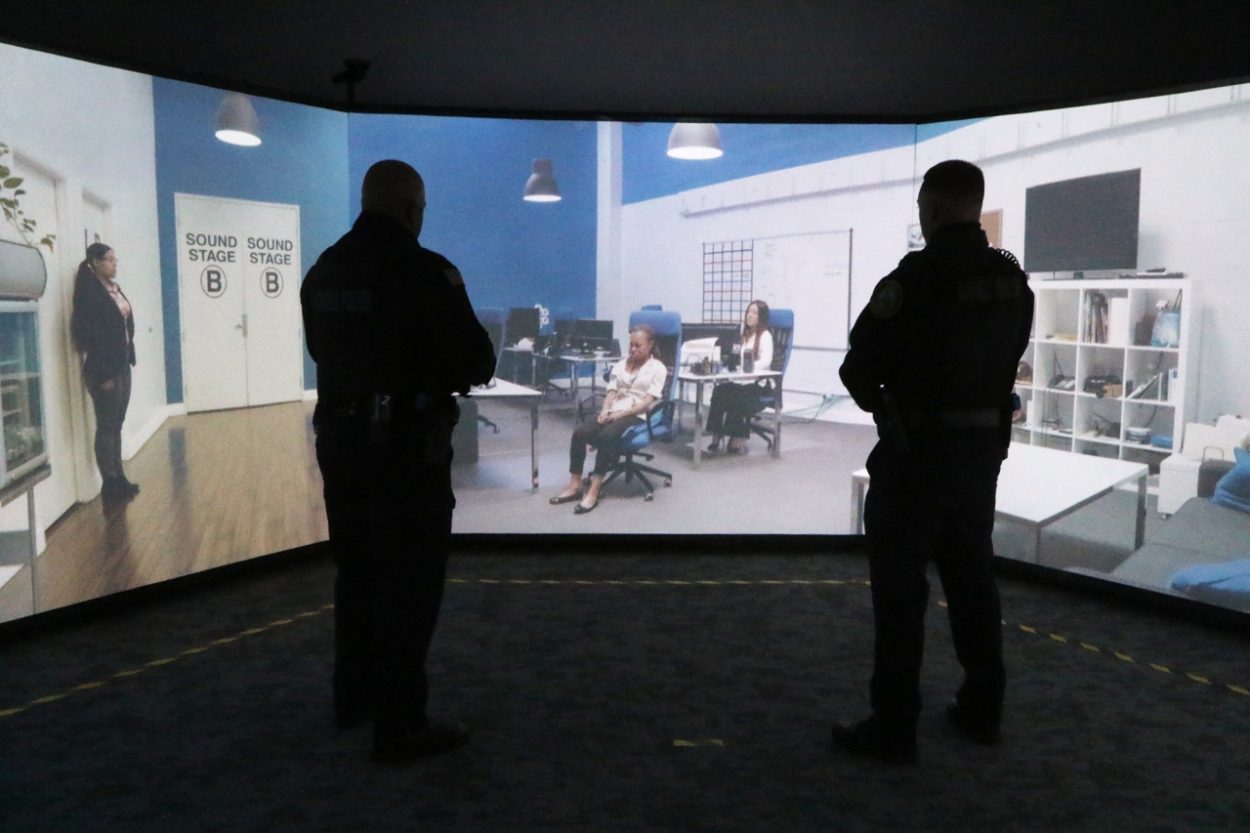
Delaying the use of force in favor of de-escalation requires good judgment, situational awareness, and frequently, an assumption of risk. In an article by Von Kliem of Force Science, the decision to de-escalate requires officers to balance immediate public safety against the desire to generate voluntary cooperation and avoid the use of force.
Of course, not all subjects are willing or able to be de-escalated. There are not magic words that guarantee an unruly subject will suddenly become compliant. If someone does not want to comply, they won’t. Officers must not only assess the subject’s willingness to de-escalate, they must consider when it has become too dangerous to keep trying. This is where the four C’s of de-escalation come into play: containment, control, contact, and communication.
Containment & Control
Containment refers to limiting the subject to a reasonable area of movement; often while keeping others out. Containment ideally reduces a subject’s chance to access weapons, evidence, or potential victims. Containment also keeps the person close enough for communication, while reducing distractions that can make communication and persuasion difficult.
Even with containment, officers will consider how much “control” they have over the subject. Control simply means the subject in not presenting an imminent threat. The presence of weapons and potential victims can challenge an officer’s ability to use verbal de-escalation and avoid the use of force.
As Von Kliem mentions in the Force Science article referenced earlier, if the only person potentially in harm’s way is the subject themselves, slowing down to set conditions for de-escalation may be the most reasonable approach.
Communication
When most people think of de-escalation, they are imagining verbal communication and body language. The words you choose are important, but so is how you say them. A calm tone of voice may encourage a person to de-escalate, where screaming may have the opposite effect.
Sometimes talking isn’t required at all. It may be that listening is more valuable and that a distressed subject needs to vent before calming down. It can help them feel as if their emotions matter and their opinions are heard.
Contact
Contact is more than just having the subject see and hear you. Officers must consider whether the subject can even understand the messages they are sending. Contact is necessary for the subject to read facial expressions, body language, and tone of voice. Physical distance and barriers can impede effective communication, and so can mental impairment that can result from alcohol, drugs, or certain mental health issues.
In police encounters, Kliem mentions that some training recommends that officers create space between themselves and a subject in crisis. When officers choose to create space, they should consider whether that distance might impede communication and de-escalation efforts.
As an officer, you know de-escalation has been a part of policing for decades and that not everyone wants to de-escalate. You know that officers don’t actually de-escalate other people. Instead, they set the conditions that provide the best opportunity and motivation for people to de-escalate themselves. In other words, de-escalation requires cooperation.
VirTra has 2 valuable de-escalation courses that are NCP-certified by IADLEST. They combine classroom learning with hands-on experience in the simulator. The best way to learn a skill is to use it in context – so VirTra allows you to research the topic, then put it into practice in a safe environment. To get started on non-verbal and verbal de-escalation training, contact a specialist.
References:
Kliem, V. (2019, July 25). Containment and de-escalation: The honest debate continues – force science. Force Science – Research | Training | Consulting. https://www.forcescience.com/2019/07/containment-and-de-escalation-the-honest-debate-continues/
Recently Published
Join Our Newsletter







